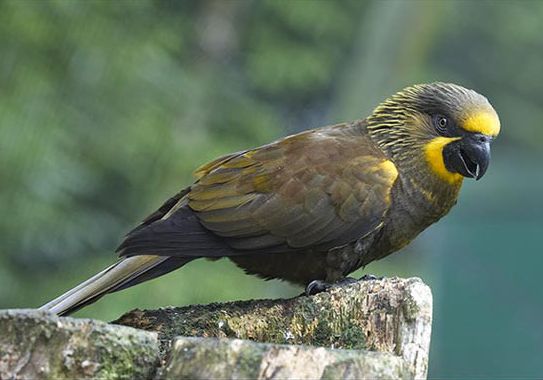
Read also the second part:
.
According to del Hoyo’s latest taxonomy, we recognize more than 60 species of lories which is a considerable part of the whole order Psittaciformes. There is no doubt that the Loriinae family is one of the most colorful group of the whole avian class. However, these birds are not so popular in captivity as many other parrots. Why? Because their maintenance is time demanding, especially under European climatic conditions. Anyway, it is still necessary to popularize their breeding and attract new aviculturists who may reproduce them and save from extinction in captivity.
We start with genus Chalcopsitta which is, among loribreeders, very popular and counts three to four species according to used taxonomic pattern. Chalcopsitta species differ significantly from other lories in coloration but also ecology and ethology.
a
a
As I indicated in introduction, a few different views of Chalcopsitta taxonomy have been introduced. The whole taxon includes three, possibly four species – Black Lory (Chalcopsitta atra), Yellow-streaked Lory (Chalcopsitta scintillata), Duyvenbodei Lory (Chalcopsitta duyvenbodei) and Cardinal Lory (Chalcopsitta cardinalis). Taxonomy of the latter species has been doubtful from everlasting. Because of its coloration Cardinal Lory was classified as representative of Eos genus in the past. Before that, some taxonomists even considered it to be a part of Lorius genus. Nowadays, most of authors include it to Chalcopsitta genus. However, in the last year Schweizer published a scientific paper on Loriinae taxonomy and classified named this species as Pseudeos cardinalis, closely related to Dusky Lory (Pseudeos fuscata). There is no doubt that Cardinal Lory is different in comparison with other Chalcopsitta species.
a

Black Lory (Chalcopsitta atra atra) (c) Crisco 1492. This file is licensed under the Creative Commons Attribution-Share Alike 4.0 International license.
a
The center of geographical distribution is found on New Guinea. Habitats of individual species don’t overlap. Each of them inhabits different part of the island so species don’t compete for food sources. Cardinal Lory is an exception because it is found on Solomon Islands.
Taxonomy based on molecular DNA analysis is still not fully developed and therefore each study can bring different view of phylogeny. Generally, in birds we know phylogenetic relationships at family or genera level. However, relationships among certain species is often unknown. It’s been suggested that within ten or maybe less years taxonomists will reach species level and fill this gap across the whole avian order.
a

Cardinal Lory (c) Mark Dumont This file is licensed under the Creative Commons Attribution 2.0 Generic license.
a
These birds were named Chalcopsitta because of their unique coloration which is a result of unique structural pigments found in their feathers. “Khalkos” means bronze, “psitta” parrot. We can observe the similar coloration pattern in starlings. When you look at the bad quality photo of the Black Lory you might say – it is just an ugly black parrot! However, when you see the same bird under the sunshine it’s obvious that it has more than one color.
The beak is black (Cardinal Lory is an exception with an orange colored beak). Another typical characteristic for the whole genus is naked skin around the lower mandible. This naked skin and orbital ring are normally black but can become white when birds are not exposed to sunshine (UV light) for longer time. White orbital ring is also typical for young birds.
Despite the fact that these birds are nectarivorous, they have long lifespan. Rosemary Low reports a breeding male from her collection which was older than 25 years and still breeding. She also believes that lories fed with commercial nectars can’t live longer than ten years. In general, Chalcopsitta parrots are sensitive to hemochromatosis (a disorder in which iron is deposited in the tissues, leading to liver damage). That’s why the diet should not contain large amount of vitamin C which supports iron absorption.
a

Duyvenbodei Lory (Chalcopsitta duyvenbodei). This file is licensed under the Creative Commons Attribution-Share Alike 3.0 Unported license.
a
Another common issue in breeding of Chalcopsitta lories is imprinting. Normally, lories are not difficult to socialize and they become independent easy after the hand feeding period. However, if we spend too much time with some young Chalcopsitta species and we don’t socialize them properly then they can lose its natural behavioral patterns and get imprinted. Such birds are still begging for food when the breeder approaches their cage even if they are adult. On the other hand, I don’t think that the imprinting in these birds would be so strong to affect their ability to reproduce.
Chalcopsitta lories can start reproducing at the age of three years however this trait is individual. Hubers reports a female of the Yellow-streaked Lory which laid eggs at the age of 20 months.
a
Title photo: (c) Ricardo Mangual. This file is licensed under the Creative Commons Attribution 2.0 Generic license.
Pingback: All facts about Chalcopsitta lory species - Black Lory, ...